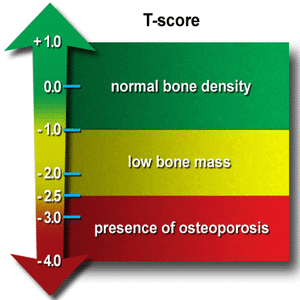What is the full form of BMD
BMD: Bone Mineral Density
BMD stands for Bone Mineral Density. It refers to an X-ray test that measures the density of minerals in your bones, e.g. bone density. It shows how many grams of calcium and other minerals are packed per unit volume of your bone. This test indicates the strength and health of your bones. Usually, people who are at the risk of and osteopenia (mild bone loss) and osteoporosis (severe bone loss) undergo this test.
Thus, BMD test is performed to:
- To identity decrease in bone density before you get a bone fracture
- To diagnose osteoporosis
- To monitor osteoporosis treatment

How is MDT Performed?
It is a painless, non-invasive procedure that requires no medication. It involves a low radiation exposure and you are required to lie on a bench or table during the test. There are two types of bone density scans:
- Central DXA: In this scan, an X-ray machine scans your spine, hip and other bones in your torso.
- Peripheral DXA: In this scan, an X-ray machine scans the bones of forearm, wrist, fingers or heel.
Understanding BDT Results:
BDT results are reported as T-scores. A T-score is a comparison of your bone density with the bone density of a 30-year old healthy person. So, it indicates how much your bone density is higher or lower than the bone density of a healthy 30-year old person.
- T-score between 1 and -1: Normal bone density
- T-score between -1 and -2.5: Low bone density (osteopenia)
- T-score of -2.5 or below, e.g. -2.6, -3.2 indicates Osteoporosis
Furthermore, BMD test is recommended by a doctor as a preventive screening for bone density under the following conditions:
- An X-ray showing bone loss in your spine
- Back pain with a possible break or bone loss in your spine
- Height decreases by half or more inch within one year
- Long-term use of steroids that may lower bone density
- After a organ or bone marrow transplant as anti-rejection drugs may affect the bone-rebuilding process
- Postmenopausal woman at the age of 50 or more
- All women over the age of 65 as they are more prone to fractures
